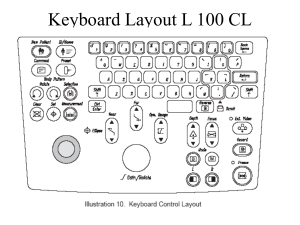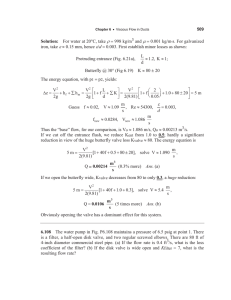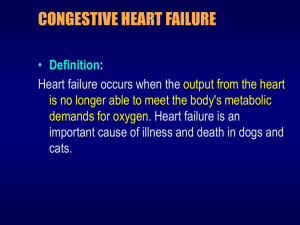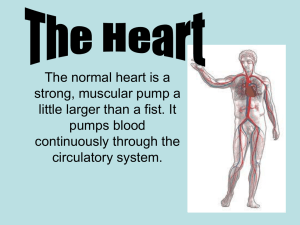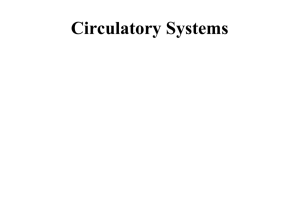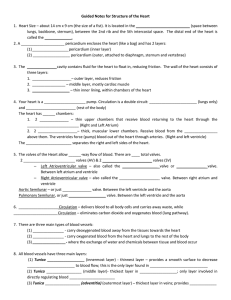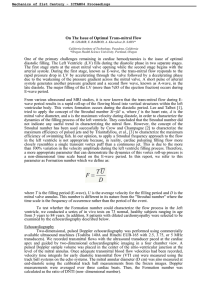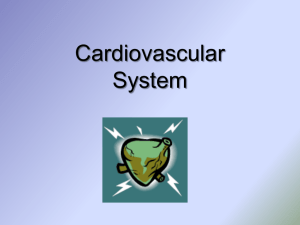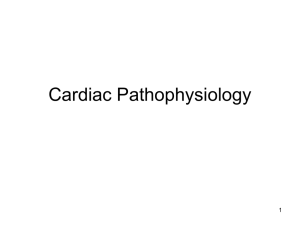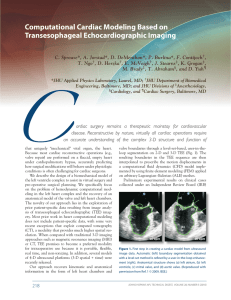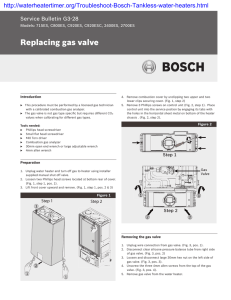On the influence of the mitral valve on the ventricular... Fortini S. , Querzoli G.. , Marchetti M.
advertisement
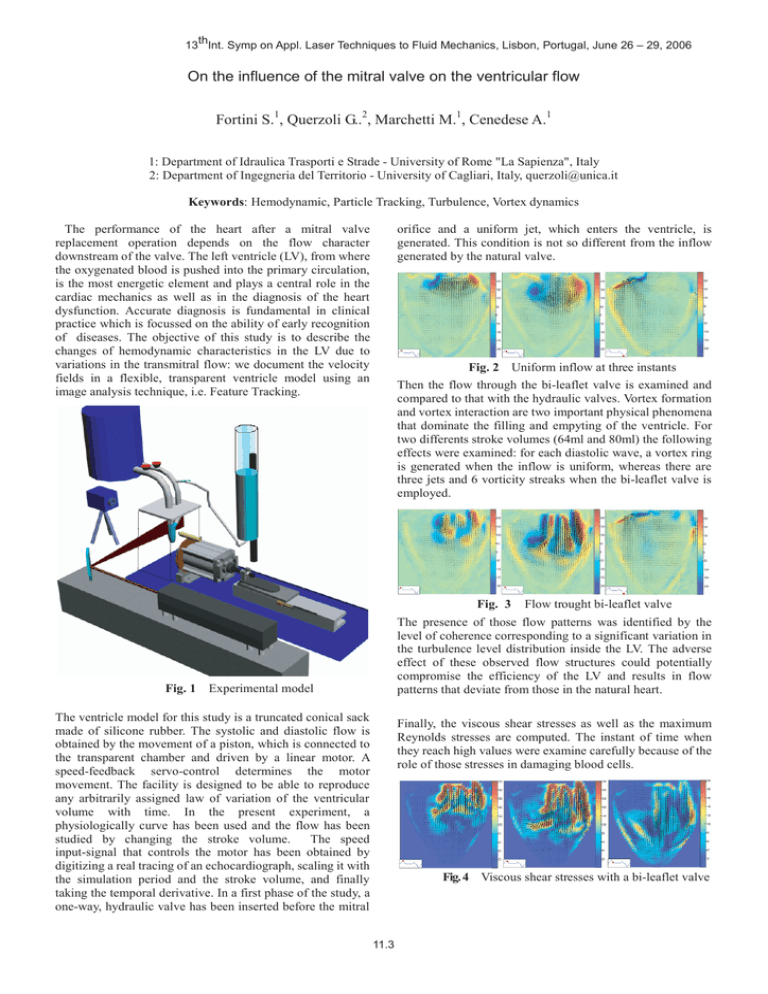
th 13 Int. Symp on Appl. Laser Techniques to Fluid Mechanics, Lisbon, Portugal, June 26 – 29, 2006 On the influence of the mitral valve on the ventricular flow Fortini S.1, Querzoli G..2, Marchetti M.1, Cenedese A.1 1: Department of Idraulica Trasporti e Strade - University of Rome "La Sapienza", Italy 2: Department of Ingegneria del Territorio - University of Cagliari, Italy, querzoli@unica.it Keywords: Hemodynamic, Particle Tracking, Turbulence, Vortex dynamics The performance of the heart after a mitral valve replacement operation depends on the flow character downstream of the valve. The left ventricle (LV), from where the oxygenated blood is pushed into the primary circulation, is the most energetic element and plays a central role in the cardiac mechanics as well as in the diagnosis of the heart dysfunction. Accurate diagnosis is fundamental in clinical practice which is focussed on the ability of early recognition of diseases. The objective of this study is to describe the changes of hemodynamic characteristics in the LV due to variations in the transmitral flow: we document the velocity fields in a flexible, transparent ventricle model using an image analysis technique, i.e. Feature Tracking. orifice and a uniform jet, which enters the ventricle, is generated. This condition is not so different from the inflow generated by the natural valve. Fig. 2 Uniform inflow at three instants Then the flow through the bi-leaflet valve is examined and compared to that with the hydraulic valves. Vortex formation and vortex interaction are two important physical phenomena that dominate the filling and empyting of the ventricle. For two differents stroke volumes (64ml and 80ml) the following effects were examined: for each diastolic wave, a vortex ring is generated when the inflow is uniform, whereas there are three jets and 6 vorticity streaks when the bi-leaflet valve is employed. Fig. 3 Flow trought bi-leaflet valve The presence of those flow patterns was identified by the level of coherence corresponding to a significant variation in the turbulence level distribution inside the LV. The adverse effect of these observed flow structures could potentially compromise the efficiency of the LV and results in flow patterns that deviate from those in the natural heart. Fig. 1 Experimental model The ventricle model for this study is a truncated conical sack made of silicone rubber. The systolic and diastolic flow is obtained by the movement of a piston, which is connected to the transparent chamber and driven by a linear motor. A speed-feedback servo-control determines the motor movement. The facility is designed to be able to reproduce any arbitrarily assigned law of variation of the ventricular volume with time. In the present experiment, a physiologically curve has been used and the flow has been studied by changing the stroke volume. The speed input-signal that controls the motor has been obtained by digitizing a real tracing of an echocardiograph, scaling it with the simulation period and the stroke volume, and finally taking the temporal derivative. In a first phase of the study, a one-way, hydraulic valve has been inserted before the mitral Finally, the viscous shear stresses as well as the maximum Reynolds stresses are computed. The instant of time when they reach high values were examine carefully because of the role of those stresses in damaging blood cells. Fig. 4 Viscous shear stresses with a bi-leaflet valve 11.3
